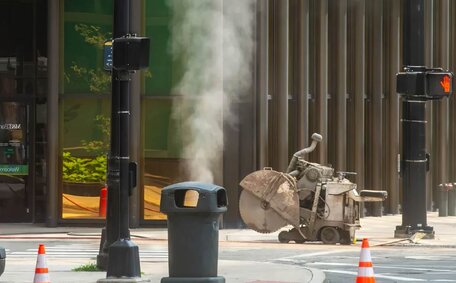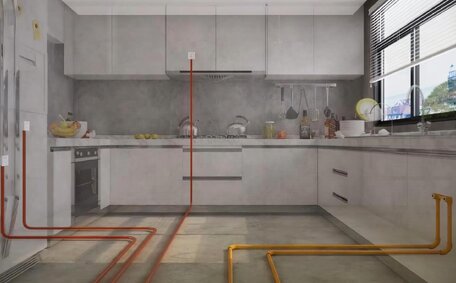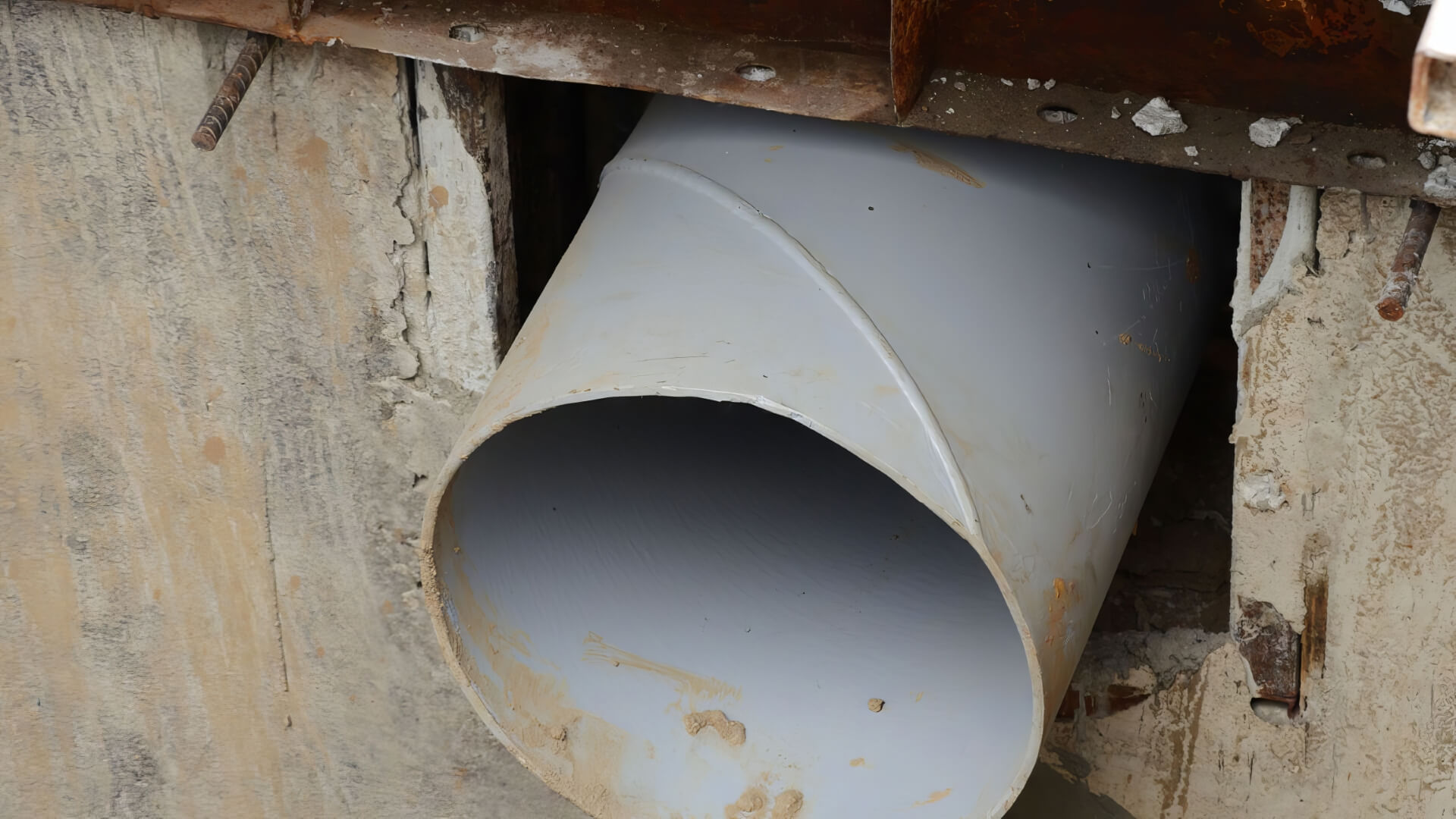Typical Lifespan of Gas Pipelines
The typical lifespan of a gas pipeline is approximately 50 years. This average lifespan allows for the safe and reliable transportation of natural gas to homes and businesses. However, a gas pipeline’s longevity can vary quite a bit depending on several key factors.
As a homeowner, you probably wonder just how long the gas pipelines running to your property will last. Getting an accurate estimate helps you plan and budget for eventual replacement if needed. While most pipelines operate problem-free for decades, they do have a finite usable life.
In the next few sections, we’ll take a closer look at what impacts the lifespan of gas pipelines. This includes pipe materials, maintenance schedules, renewal programmes, and even external factors like renewable energy adoption. Understanding all the variables provides great insight into the expected lifespan of your gas pipeline.
Factors Impacting Gas Pipeline Longevity
Many variables influence how long a gas pipeline can continue operating safely before requiring replacement. These key factors include:
- Mechanical stresses - Gas pipelines endure constant stresses from internal pressure, external forces, temperature changes, and ground movements that eventually cause material fatigue.
- Corrosion - Both internal and external corrosion slowly damage pipelines from the inside out and outside in despite protective coatings and cathodic protection systems.
- Quality of installation - Proper welding, handling, backfilling and pressure testing during initial construction significantly impact longevity.
- Advances in technology - New pipe materials, construction methods and integrity inspection tools often necessitate pipeline upgrades or replacements.
- Obsolete infrastructure - Older pipelines utilising now-outdated jointing techniques or materials face modernisation.
- Changes in regulations - Stricter safety, environmental and consumer laws occasionally require pipeline upgrades to meet compliance.
Economic regulators also play a role in determining the usable life of gas pipelines based on usage prices and renewal strategies of pipeline owners.
Understanding these longevity factors provides insight into why some pipelines may outlast others by years or even decades past their average 50-year lifespan.
Pipe Materials and Construction
The materials used for constructing gas pipelines also impact their longevity. Pipelines constructed years ago, such as those from the 1960s and earlier, often employed basic carbon steel or cast iron. These bare metal pipes faced quicker corrosion and material fatigue.
Thankfully, most modern gas pipelines instead utilise advanced polyethylene plastic that resists corrosion. Protective polymer coatings and modern cathodic protection also help prevent external corrosion on bare steel pipelines. However, quality welding remains crucial during initial construction to prevent weaknesses.
Over time, pipeline owners have renewed original pipelines with modern, corrosion-resistant materials. New installation methods also reduce risks of mechanical damage compared to techniques used decades ago. For example, horizontal directional drilling allows gas pipelines to tunnel beneath obstacles rather than trenching through them.
With superior materials, construction quality, and maintenance, newer gas pipelines often outlast older installations. Some may continue operating safely for 60 to 80 years given regular inspection and minor renewals where necessary.
Environmental Conditions
The environments gas pipelines operate in also affect their usable lifespan. Factors like soil composition, weather patterns and geographical stresses impact pipeline integrity over the years.
Corrosive soil chemistries can accelerate external pipeline corrosion despite protective coatings. Areas prone to flooding or waterlogged soil also hasten corrosion. Freezing climates subject pipelines to frost heave and thaw settlement soil movement.
Geological factors like seismic activity and soil stability play a role too. Land shifts from earthquakes, erosion or landslides add mechanical strain. Damage risks also arise in areas of heavy agriculture or construction activity.
Climate change brings added impacts with sea level rise and more extreme weather events. Flood and bushfire risks in particular may threaten pipeline longevity going forward.
The global push towards decarbonization also affects gas infrastructure investment as renewables start competing with natural gas. However, natural gas will continue playing a transitional role in the energy mix for years to come.
Maintenance and Inspections
Regular maintenance and inspections help ensure gas pipelines remain safe and last beyond their expected 50-year lifespan. Preventative maintenance allows pipelines to operate reliably while also detecting issues early.
Best practise maintenance procedures for gas pipelines include:
- Cathodic protection system checks - Regular testing ensures electrical corrosion prevention systems continue working effectively.
- Coating surveys - Inspecting external pipeline coatings detects coating failures so crews can repair damaged sections.
- Cleaning and debris removal - Keeping pipeline easements clear through vegetation control and debris removal protects from external damage.
- Leak surveys - Annual leak surveys detect small fugitive gas leaks early before they become safety concerns.
Likewise, periodic in-line inspections utilise "smart pig" devices to internally assess pipeline walls. These integrity inspections identify pipe defects and weaknesses forming over time. Crews then repair or replace pipe sections as needed.
With adequate maintenance and safety inspections every 3 to 15 years, most steel pipelines continue performing reliably for over 50 years. Speak to Rouse Hill Plumbing about arranging maintenance inspections for your natural gas infrastructure.
Safety Standards and Regulations
Strict safety standards and government regulations help ensure the ongoing integrity and safe operation of gas pipelines across their lifespan. Compliance with codes and laws specific to the natural gas industry prevents incidents and supports longevity.
Various standards bodies and government agencies oversee gas pipelines. These include bodies like the American Society of Mechanical Engineers for pressure vessel codes and pipeline design standards maintained by the Australian Pipeline Industry Association.
Safety regulations also apply during pipeline construction, operation and maintenance. For example, laws cover pipeline route approval, design factors, welding procedures, pressure testing, corrosion protection, easement upkeep, leak detection and more.
General pipeline operators must submit safety management plans and carry out risk assessments. They undergo regular audits while also reporting incidents and defects. This oversight helps uphold stringent industry standards.
Proper training and qualification of personnel directly involved with pipelines is mandatory too. This helps ensure human errors do not lead to compromised safety or integrity issues during installation, inspection, maintenance or repairs.
By complying with the various applicable codes and regulations, pipeline owners and operators can effectively manage safety risks over time. This allows gas pipelines across Sydney and broader New South Wales to continue operating reliably for many decades.
Age-Related Pipeline Risks
As gas pipelines approach or exceed 50 years in service, the risks of leaks, ruptures and disasters increase if utilities do not properly inspect and replace ageing infrastructure. Old pipes suffer metal fatigue and are more susceptible to corrosion and welding failures. Utilities must be proactive, not reactive, in pipeline risk management as the network ages.
Warning signs that a gas pipeline may be nearing the end of its lifespan and require replacement include:
- Small gas leaks - Slow leaks indicate external corrosion or seam cracking allowing gas to escape.
- Dips in pressure - Inability to maintain pressure points to internal corrosion or defects restricting flow.
- Heavy external corrosion - Pipe examinations reveal significant coating damage and wall loss despite cathodic protection.
- particulate in gas samples - Internal corrosion or loose scale shedding into the gas stream.
- Cracks and defects evident during in-line inspections using "smart pig" devices.
While newer gas pipelines utilise improved materials and construction methods, older pipes still make up large portions of gas distribution grids. Utilities must invest adequately in replacement programmes to stay ahead of risks from ageing infrastructure at fifty years and beyond.
Deciding When to Replace Pipelines
With gas pipelines potentially exceeding the 50-year mark, forecasting when a pipeline would necessitate replacement can prove challenging for Rouse Hill homeowners and business owners. Seeking professional advice is crucial when weighing up factors like safety, costs, and environmental responsibility against expected remaining lifespan.
As your trusted local plumbing experts, Rouse Hill Plumbing can assess the age, material and condition of your gas pipelines. We determine if replacement aligns better than persisting deterioration risks and major future repairs. We consider safety first, compliance obligations, and environmental impacts like tiny methane leaks contributing to climate change.
Replacing old gas pipelines represents a major investment. Our team advises scheduling aligned with other planned renewal works. Our team advises scheduling aligned with other planned renewal works.
Expert Council planning guidance may also help navigate red tape for more significant pipeline replacement projects.
While rigid council infrastructure life expectancy tables should not singularly dictate replacement decisions, our specialists interpret these recommendations against pipeline sampling data trends. We then advise you transparently on the ideal timing for replacement based on holistic factors.
Contact our professionals at Rouse Hill Plumbing today to discuss better determining if gas pipeline replacement makes sense for your home or business in the near future.
Pipeline Abandonment Considerations
When gas pipelines reach the end of their usable lifespan and require replacement, owners must properly abandon the original conduits no longer in service. Pipeline abandonment typically involves removing all surface structures like valves and maintenance points but leaving the pipe itself underground.
Reasons for not removing retired gas pipe sections include:
- Major excavation works carry environmental impacts and community disruption from traffic diversions along the pipeline route
- Unearthed pipe removal and disposal/recycling proves costly
- If pipeline crossings traverse roads, railways or waterways, temporary closures often prohibitive
Instead, crews seal abandoned lines at their endpoints and fill the empty conduits with concrete slurry or inert gas. This prevents contamination entering the deactivated pipeline. Decommissioned pipes left buried pose no safety risks if properly isolated from active networks and with all surface infrastructure removed.
Environmental authorities may mandate special abandonment procedures for certain gas pipeline removal or decommissioning projects within Sydney metropolitan areas. Rouse Hill Plumbing can advise on local Council regulations regarding gas pipe abandonment works.
The Future of Gas Pipelines
While natural gas pipelines continue playing an integral role supplying Australian homes and businesses, the push towards renewable energy threatens the long-term outlook for gas infrastructure.
As solar, wind and other renewables expand their energy mix share, gas demand risks decline. This forces gas network owners to re-evaluate investment in new pipelines and major life extension projects on older conduits. Upgraded electricity transmission infrastructure may also enable renewable energy to displace gas use in many regional zones.
However, experts predict natural gas will continue acting as a transitional energy source throughout Australia over the next 20 to 30 years despite decarbonization efforts. Gas pipelines will remain vital providing heating, hot water and cooking needs. Renewables cannot yet reliably power these crucial applications.
Gas also currently provides essential energy security as a stable electricity grid backup during intermittent solar and wind generation. Modern pipelines offer robustness too, with corrosion-resistant materials and construction methods supporting longevity.
As leading Rouse Hill plumbers since 2013, Rouse Hill Plumbing stays well-versed on the latest industry trends affecting natural gas. We actively advise local customers on forward-looking pipeline servicing considerations and replacement planning.
For further information or assistance managing your gas pipelines amid the transition towards renewables, please email, call or request an appointment with Rouse Hill Plumbing today.






